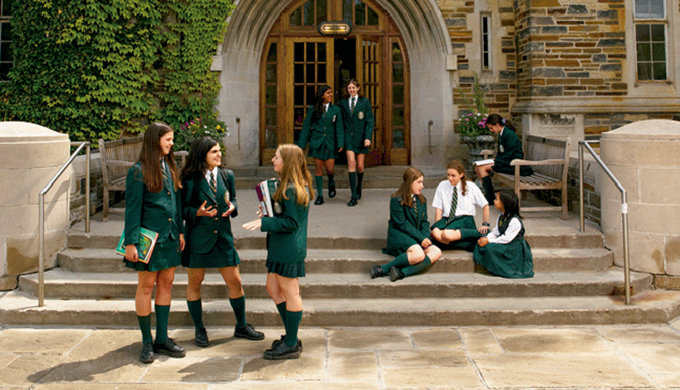
Choosing your child’s education can be one of the most daunting tasks you face as a parent. Regardless of whether you choose to go the public, private or home school route, there are numerous factors that make one program, school or curriculum more appealing than another.
Boarding school is one such option that appeals to parents and children alike. The boarding school environment offers benefits for academic, creative and personal development. And yet not all boarding schools are the same. Broadly speaking, there are 8 main types of boarding schools (some schools may even fall under more than one of these categories). Which one seems best for your child?
- College preparatory school. A college preparatory school encompasses the popular image of a boarding school: rigorous academics and an expectation that each student will attend college and have a successful professional career. In fact, the boarding school environment prepares students for college life beyond the classroom: cooperating with roommates and scheduling one’s free time in a smart fashion are just two of the important lessons learned while under the support and guidance of staff.
- Military school. At a military boarding school, same academic rigor of a “regular” college preparatory school is available, but with a military twist. These are ideal schools for students who wish to have a military career, especially if they want to immediately enter a military college, such as West Point, after graduation.
- Sports school. Virtually all boarding schools offer sports programs. After all, non-academic activities are necessary to give the kids a balanced life outside of the classroom. But a sport-based boarding school will prioritize sports more than the average boarding school, preparing students for professional careers.
- Performing arts school. Some schools focus on sports or military training in addition to the typical academic studies, and others focus on music, dance, drama and other creative pursuits. Performing arts boarding schools are a popular gateway for budding models, actors and actresses, singers and other young performers inspired by Hollywood.
- Religious school. Religious schools focus on a particular denomination or integrate religious studies and teachings into academics and daily life. Prayer opportunities are typically prioritized, as are worship services and traditional celebrations. The curriculum may also be influenced by religious beliefs.
- Therapeutic school. Therapeutic schools provide the daily structure and care that some students may require due to health concerns, substance abuse challenges, mental health struggles or any other extenuating circumstance that may alter their ability to succeed in a traditional academic environment. While most boarding schools boast a highly individualized approach to academics, therapeutic schools provide a unique integration with health care.
- Junior school. Junior schools are designed specifically for students in kindergarten through 8th grade (but some schools may offer only 6th through 8th grade, etc.). By keeping only the younger kids together, the school’s activities and curriculum can include a variety of different learning experiences. At such a young age, kids rarely know what they plan to do after school and thus are not able to choose a specialty boarding school yet.
- Single-sex school. Some boarding schools are coed, whereas others welcome only girls or only boys. Proponents of this type of school environment believe that splitting the sexes results in better focus in the classroom and a more positive, less-competitive atmosphere among the students. From a parent’s perspective, it can offer a certain level of reassurance as well.
Given all of the options at your fingertips, it’s important to remember what’s ultimately at stake: your child’s happiness and wellbeing. What will work best for him or her? Be sure to make this decision together!